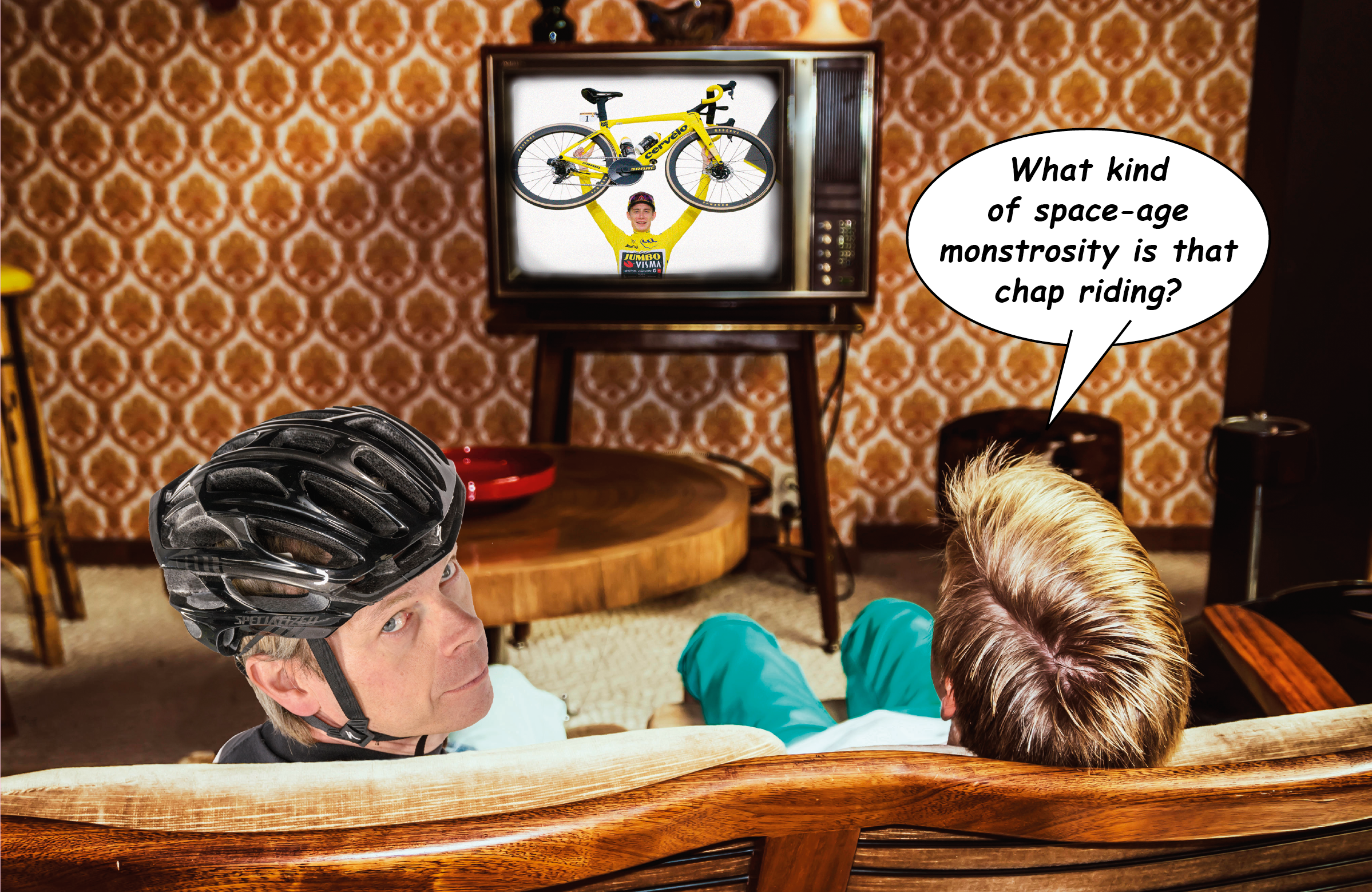
Winter is here. And as the rest of us fade into the darker months, my friend Bernard has his winter glow. He’s a man made for winter. He rides with gusto, he is more engaged in his surroundings.
For instance, last week on a ride we passed one of the newer local clubs, or ‘clubs’ as I’m sure he would punctuate it. It’s not a traditional club, simply a non-affiliated group loosely based around a local tech start-up hub. The sight of them made Bernard very happy, which is to say, very cross.
Bernard does not like their bikes, which are universally very nice. “They don’t know what they’re doing,” he says. “They’re not running a tight pace line, they’re not splitting the work, they’re riding 10 feet apart and they’re sitting on £10,000 each. They look like a touring run that won the lottery.”
This is not a new complaint. On every ride he likes to critique what other riders are sitting on. Too new, too shiny, too disc-brakey, too fast. Or (less often) too dirty or too cheap. What the actual people who own the bikes want to ride and how much they’re prepared to spend doesn’t even begin to feature in the calculation.
It’s taken me a while, but I have managed to work out some of the algorithm. For a long time I thought he just didn’t like anyone to have a better bike than him – as recently as this summer he refused to go for a ride with me after I turned up with some new carbon wheels. He relented, as I knew he would, when I offered to swap wheels with him, which seemed to prove that theory.
But I’ve decided it’s more sophisticated/demented than that. What you may ride partly depends on how good a rider you are – better riders are allowed a better bike. Although only up to a point – if you win the Tour de France, but you didn’t do it on the same variety of 10kg, six-speed farm gate that Bernard Hinault used to use, you will not hear much applause from Bernard.
There is an age correction factor as well. Juniors should ride hand-me-downs – ideally no junior should own a bike that is younger than they are. If it’s the wrong size, so much the better. This is a) so they, “Appreciate a decent bike when they get one,” and b) “to keep the runts as slow as possible for as long as possible.”
The age correction is more complicated for grown-ups. But I think it boils down to this: you should always ride the same bike (or equivalent) that you were riding – or would have been riding – when you were 35. I think the ‘logic’ here is that all right-thinking people retire from racing at that age, and from that point onwards, why on earth would you need a better bike? No one who has retired, or should have retired, has any business trying to get faster unless they are consumed with some sort of vanity.
There is a small subset of people whose bikes are not good enough, and it’s composed entirely of mid-ranking pro riders who have the temerity ever to be seen with something that’s not top spec and immaculate. “They’re lucky to be pros – they need to have respect for their job,” he’ll say, looking at someone scraping a part-time living on the UK domestic scene who hasn’t lined their tire labels up with their valves.
Incidentally, his contempt for touring runs dates to the day he was overtaken by just such a group when he was halfway through a tempo training session. He’s never quite recovered. If you own a Dawes Galaxy and some panniers, don’t take it personally.







